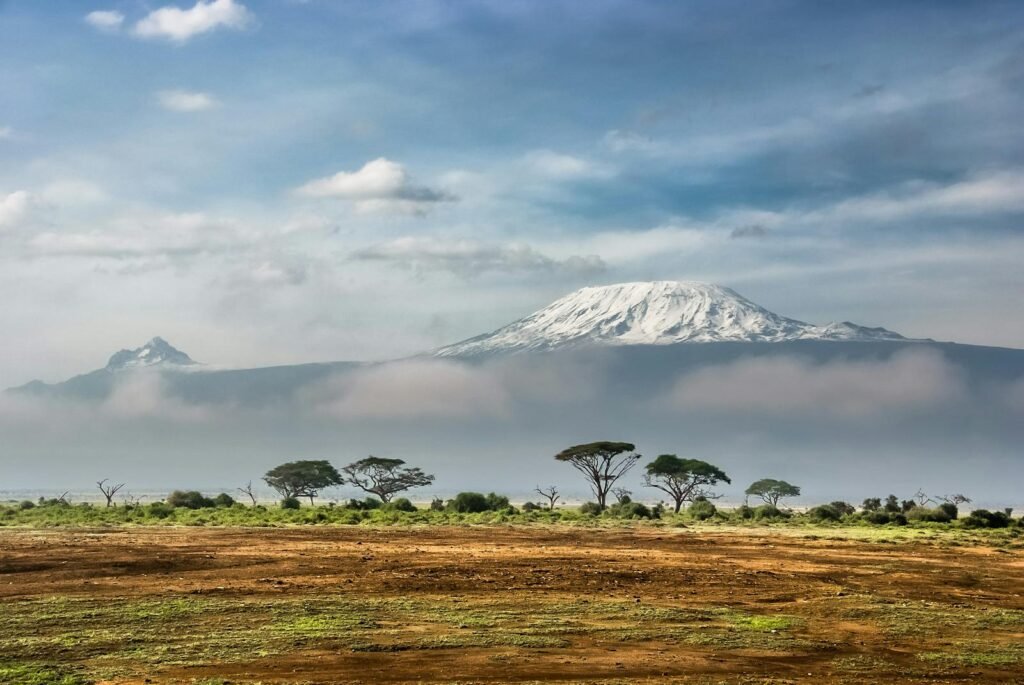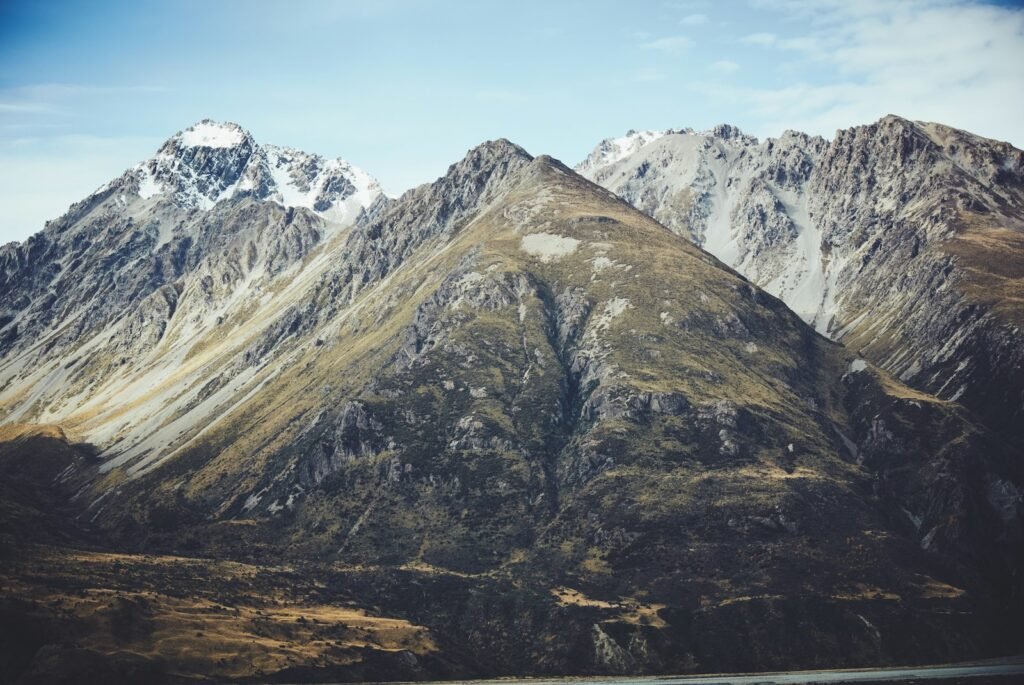Imagine standing on a giant’s shoulder, gazing out across Africa’s rooftop, and discovering a world so strange it feels otherworldly. That’s what it’s like to venture up Mount Kilimanjaro—not just for its icy crown or sweeping savannas below, but for the bizarre, enchanting, and sometimes downright perplexing flora that clings to its slopes. Kilimanjaro isn’t just the tallest freestanding mountain on Earth—it’s a living museum of botanical oddities, a place where plants defy expectations and rewrite the rules of survival. Whether you’re a nature nut, a science buff, or just someone who loves a good mystery, Kilimanjaro’s plant life is guaranteed to make you marvel, laugh, and maybe even scratch your head in wonder.
The Altitude Effect: Flora in Overdrive

Altitude changes everything on Kilimanjaro. As you ascend, the climate flips from tropical to arctic in a matter of kilometers. Plants here aren’t just surviving—they’re performing extraordinary tricks to stay alive. Some grow in tight clusters to fight off the cold, while others develop waxy coatings to keep precious moisture from escaping. It’s a dizzying dance of adaptation, where every meter upward means a new challenge and a new botanical response.
Four Seasons in a Day: Zoned for Survival
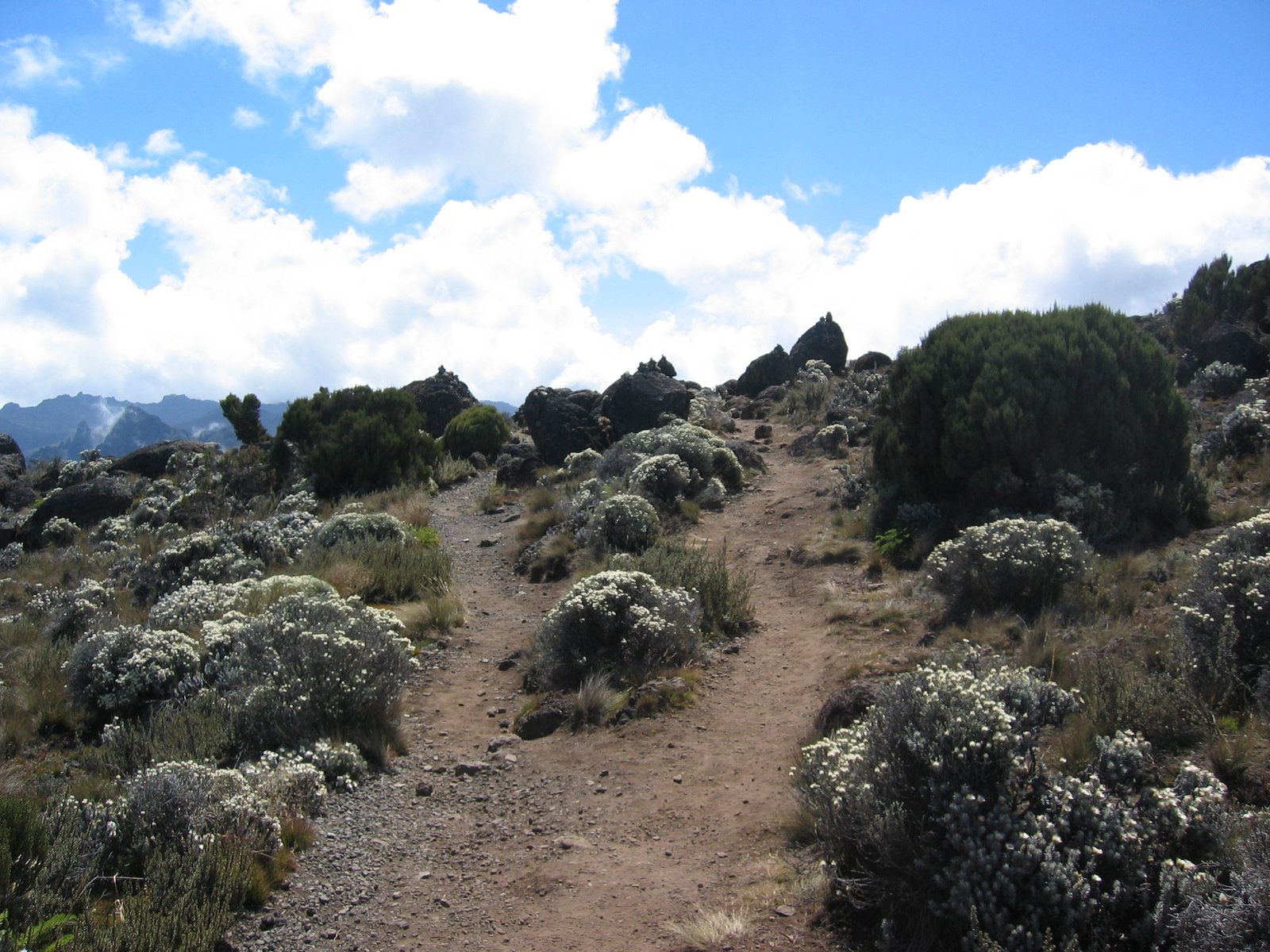
Kilimanjaro is split into distinct vegetation zones, each with its own cast of plant characters. Starting with lush rainforest at the base, moving through heath and moorland, then to alpine desert, and finally the bleak arctic summit—it’s a rapid-fire journey through four seasons in a single climb. Each zone hosts flora perfectly tailored to its microclimate, and the transitions between them are dramatic enough to leave scientists in awe.
Giant Groundsels: The Mountain’s Alien Sentinels
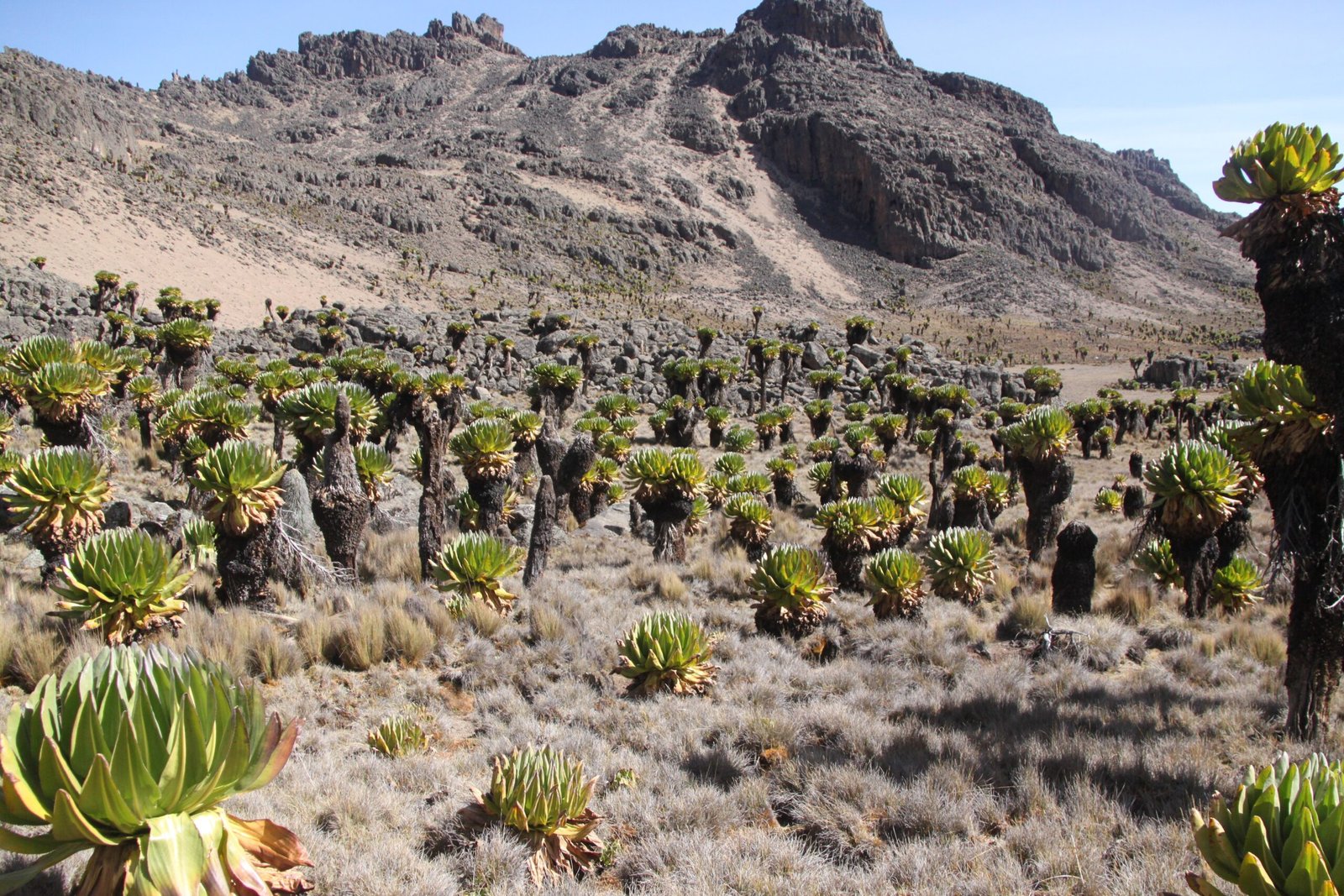
Perhaps the most jaw-dropping plants on Kilimanjaro are the giant groundsels (Dendrosenecio kilimanjari). Towering up to 6 meters, these shaggy, tree-sized daisy relatives look like they belong in a Dr. Seuss book. Their thick, woolly leaves trap heat at night and repel frost, making them marvels of evolutionary engineering. Spotting these looming figures in the mist can feel like stumbling onto another planet.
Lobelia Deckenii: The Water-Storage Master

One of Kilimanjaro’s most clever flora is Lobelia deckenii, a plant with a secret water reservoir hidden in its stem. This clever adaptation helps it survive freezing nights by protecting its core from frost. Its rosette shape funnels dew and rain right to its center, showing just how ingenious plants can get when faced with extreme highs and lows.
The Heather Forest: Twisted, Timeless Beauty

As you climb higher, dense cloud forests give way to eerie heather woodlands. Old Man’s Beard lichen drapes from the branches, and the air feels thick with mystery. The heathers (Erica species) here grow into tangled trees rather than the low shrubs we’re used to, their trunks twisting skyward in haunting, sculptural forms. It’s like walking through a haunted forest painted by nature’s wildest imagination.
The Mossy Marvels: Resilience in Green

Blanketing rocks and trees at the higher altitudes, mosses and liverworts make up a hidden yet vital layer of Kilimanjaro’s ecosystem. These tiny plants are masters at soaking up mist and fog, thriving in places where most others wither. Their resilience is legendary—they can go dormant for months, springing back to life with just a hint of moisture.
Alpine Everlastings: Flowers That Outlast Frost

In the harsh alpine desert, most plants wouldn’t dare to bloom. But the Helichrysum species, known as everlastings, cover the ground with silvery, felted leaves and papery flowers that seem immune to the elements. These blooms don’t just look pretty—they act as tiny space heaters, reflecting sunlight by day and holding warmth by night. It’s a floral survival strategy worthy of a science fiction story.
Kilimanjaro’s Endemic Species: Nowhere Else on Earth

Many of the plants found on Kilimanjaro exist nowhere else in the world. Endemic species like Senecio johnstonii and Impatiens kilimanjari have evolved in splendid isolation, shaped by the mountain’s unique climate and geography. These rare plants are living testaments to nature’s creativity and the power of evolutionary pressure.
The Secret Life of Lichens

Lichens, those unassuming gray-green patches on rocks and bark, are unsung heroes of the mountain. They’re not just plants—they’re complex symbiotic unions between fungi and algae, tough enough to survive the harshest winds and cold. Lichens help break down rock into soil, paving the way for more complex plant life and playing a silent but crucial role in Kilimanjaro’s ecosystem.
Weird Pollinators: Partnerships in the Clouds

Kilimanjaro’s plants have struck up unusual partnerships with the animals that call its slopes home. Some flowers open only at night to attract moth pollinators, while others have evolved shapes that perfectly fit the local sunbirds’ curved beaks. These relationships are so finely tuned that a change in one partner could spell disaster for the other—a delicate dance of survival played out above the clouds.
Moorland Cushion Plants: Nature’s Living Pillows
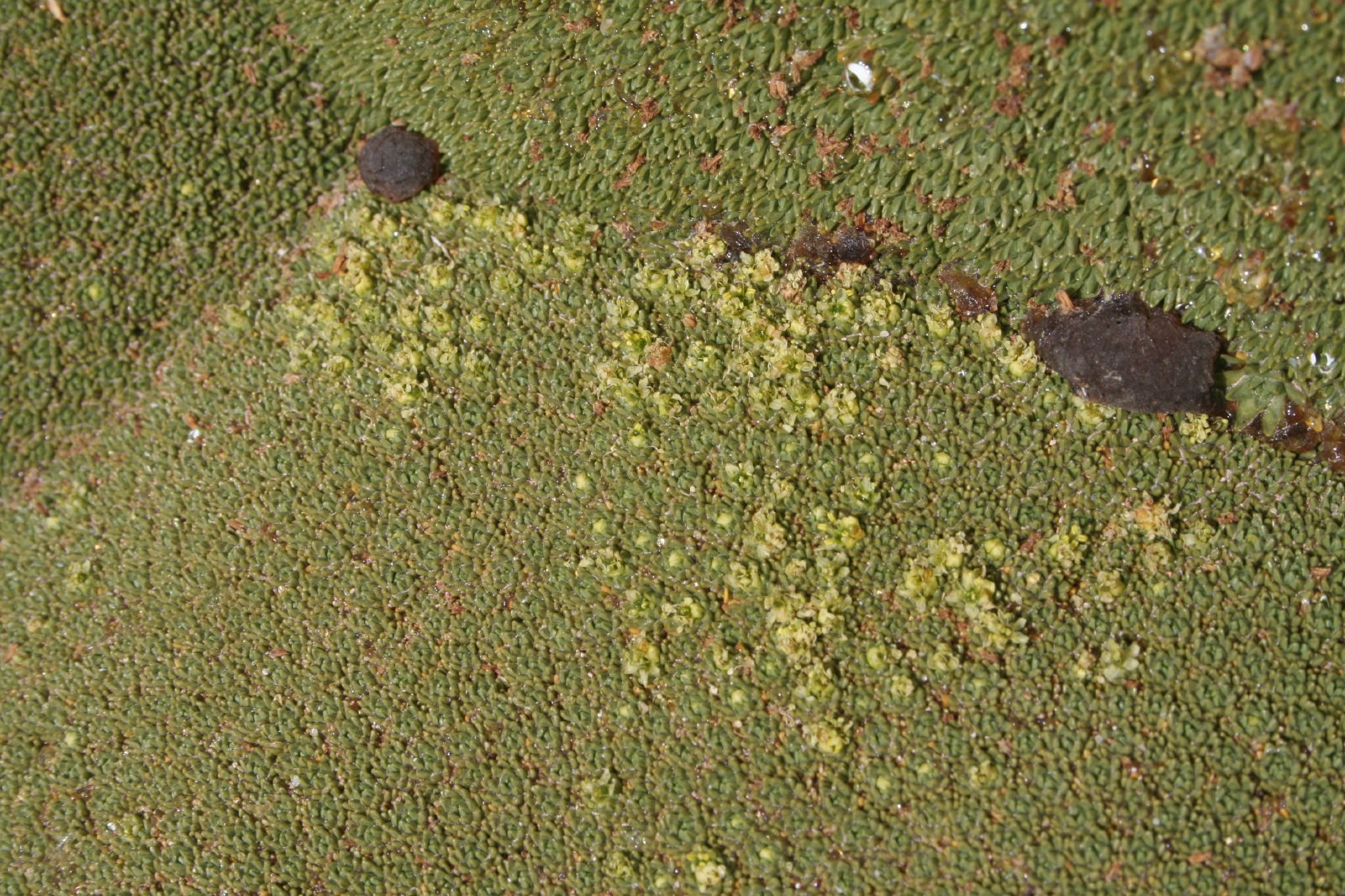
In the windswept moorland, cushion plants like Azorella compacta form dense, spongy mats that hug the ground. These living pillows provide warmth and shelter, creating microhabitats for insects and even other plants. Their tightly packed leaves reduce water loss and shield them from biting winds, showing there’s wisdom in sticking together when the going gets tough.
Succulent Surprises: Storing Water for the Long Haul

While Kilimanjaro is famous for snow, its upper slopes are astonishingly dry. Succulent plants like Crassula and Kalanchoe have adapted by storing water in their fleshy leaves and stems. These botanical camels can survive long stretches without rain, swelling with moisture when it’s available and shrinking in times of drought.
The Power of Plant Pigments

Colors on Kilimanjaro aren’t just for show—they’re survival tools. Many alpine plants have vibrant red or purple pigments that act like sunscreen, protecting them from intense UV rays. Others turn silvery or develop fuzzy hairs to reflect sunlight and conserve water. It’s a dazzling palette with a serious purpose, turning adaptation into art.
Fire-Resistant Flora: Surviving the Occasional Blaze

Though it might seem unlikely, lightning-sparked fires can sweep through Kilimanjaro’s lower slopes. Some local plants, like certain Erica species, have evolved thick bark or underground stems that allow them to resprout after the flames pass. Fire isn’t always a destroyer here—it’s part of a cycle that keeps the ecosystem healthy and diverse.
Frost Flowers: Surviving on the Edge

At the mountain’s icy heights, plants like Carduus pycnocephalus produce delicate frost flowers—tiny blooms that can withstand freezing temperatures. They open at the warmest part of the day and close tightly at night, using a daily rhythm to dodge the cold. This adaptation lets them make the most of short growing seasons and fleeting warmth.
Medicinal and Cultural Marvels

Many of Kilimanjaro’s plants aren’t just oddities—they’re also woven into the lives and traditions of local people. Some are used in traditional medicine, while others feature in folklore or rituals. For instance, the bark of certain trees is brewed into teas believed to cure ailments, and bright flowers are used in celebratory garlands. These plants are more than biology—they’re part of a cultural legacy.
Nature’s Time Capsules: Ancient Lineages on the Slopes

Some Kilimanjaro plants represent ancient evolutionary lineages, unchanged for millions of years. Living fossils like Podocarpus trees remind us that this mountain is more than a landscape—it’s a vault of biological history. Studying these ancient species is like peering back in time, offering clues about how life adapted to changing climates over millennia.
Threats to Kilimanjaro’s Unique Flora

Sadly, Kilimanjaro’s botanical wonders face mounting threats. Climate change is shrinking glaciers and shifting vegetation zones upward, squeezing rare plants into ever smaller refuges. Invasive species, human encroachment, and unsustainable tourism also put pressure on these fragile ecosystems. If we lose Kilimanjaro’s unique flora, we lose irreplaceable chapters of nature’s story.
Conservation Efforts: Protecting a Living Treasure

Scientists, conservationists, and local communities are working together to safeguard Kilimanjaro’s botanical heritage. Projects include reforestation, invasive species control, and educating visitors about the mountain’s ecological value. The challenge is huge, but so is the determination to keep this living laboratory thriving for generations to come.
Why Kilimanjaro’s Flora Matters for the World

Kilimanjaro’s weird and wonderful plants aren’t just local oddities—they’re global treasures. They hold secrets about adaptation, resilience, and survival that could help us face a changing climate. The mountain’s flora teaches us that the strangest solutions are often the most ingenious, and that life’s diversity is its strength. If we care for these botanical anomalies, we’re really caring for the planet’s creativity itself.

